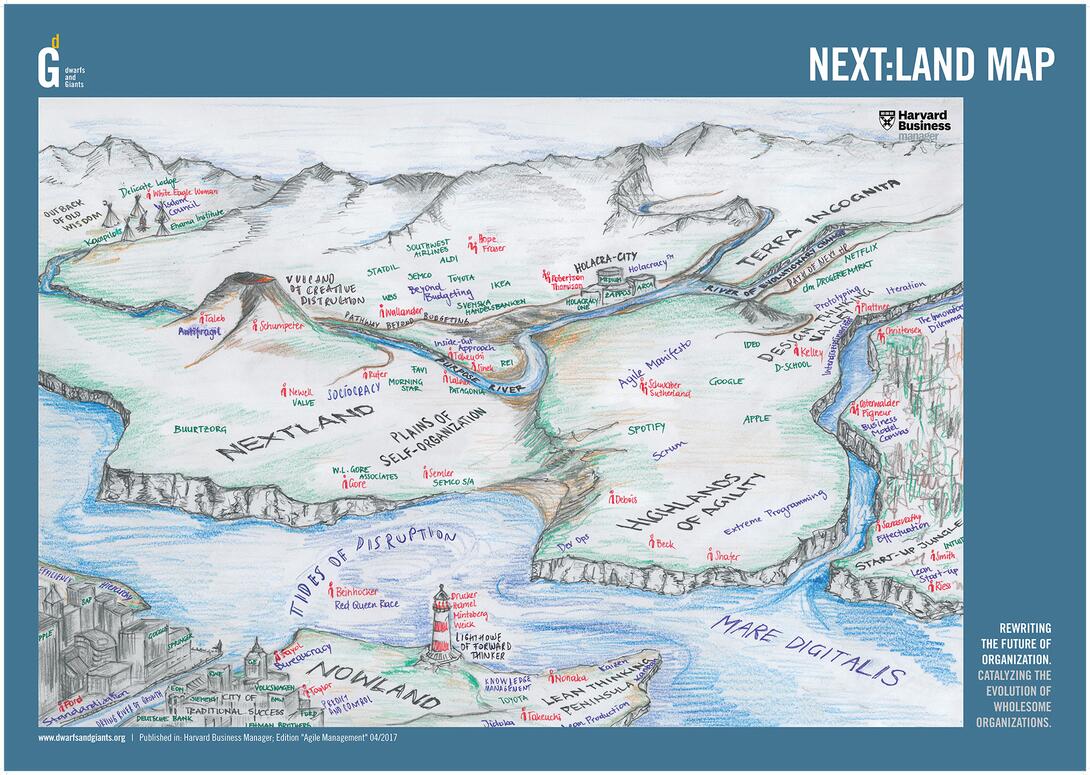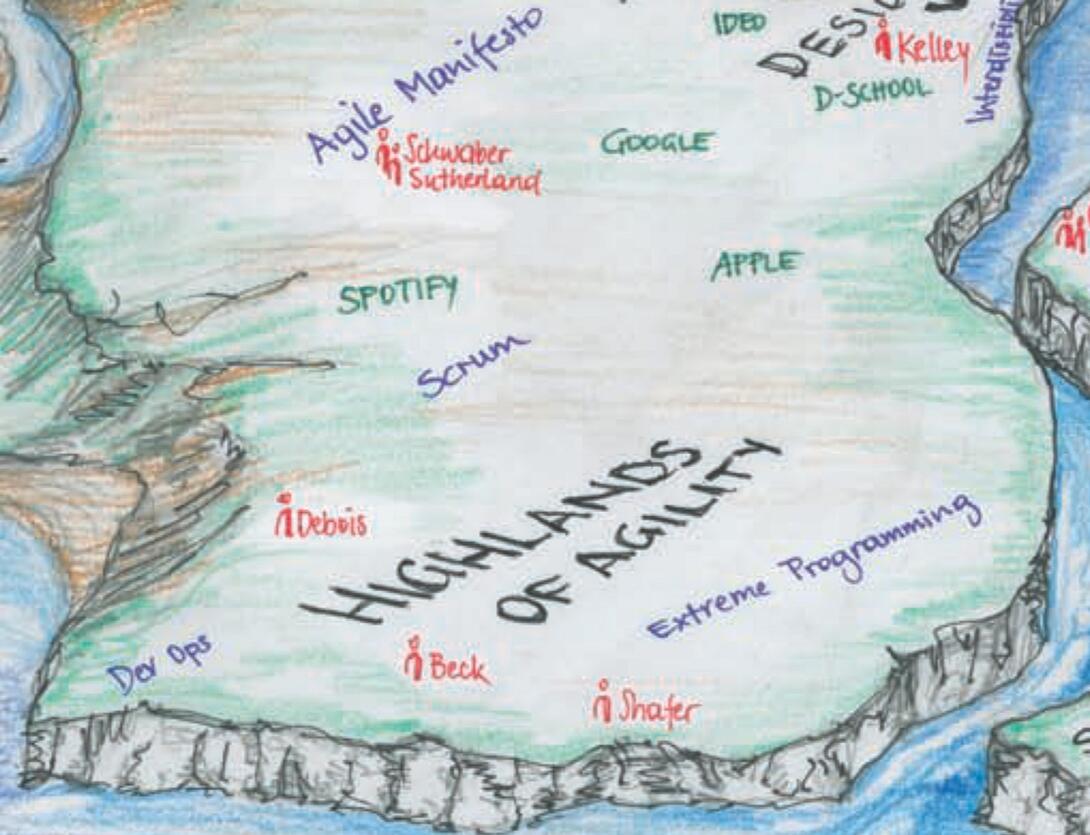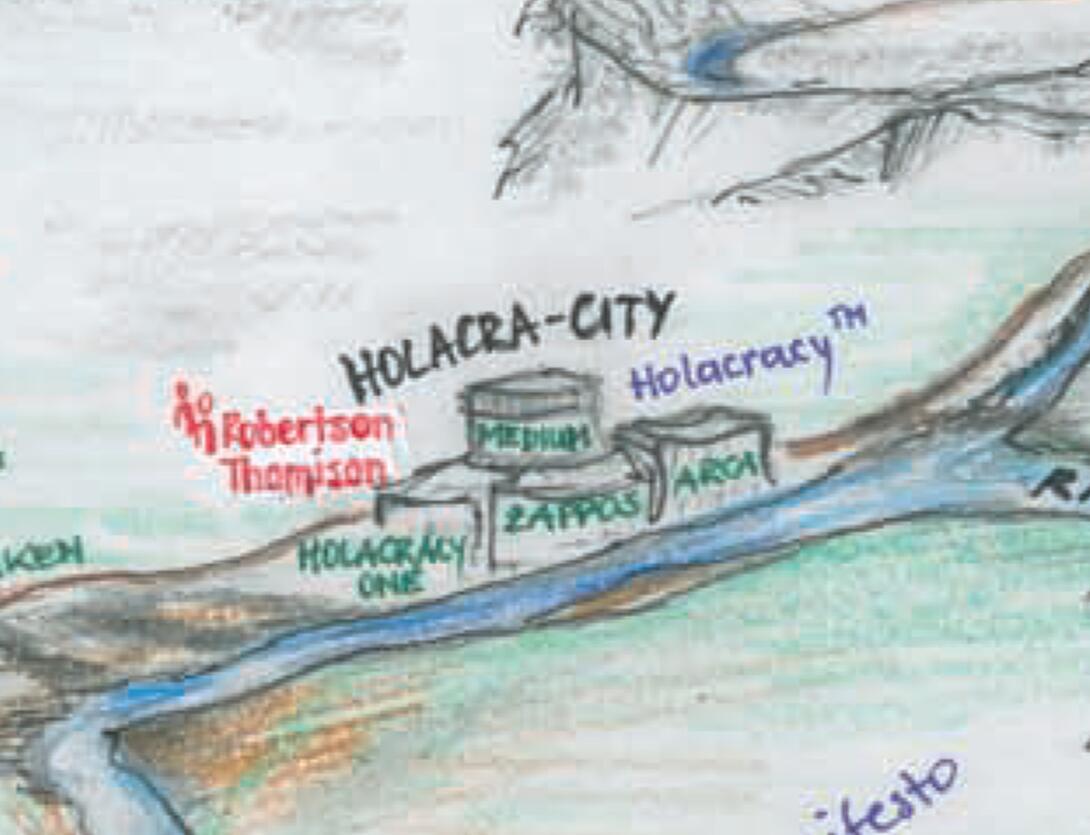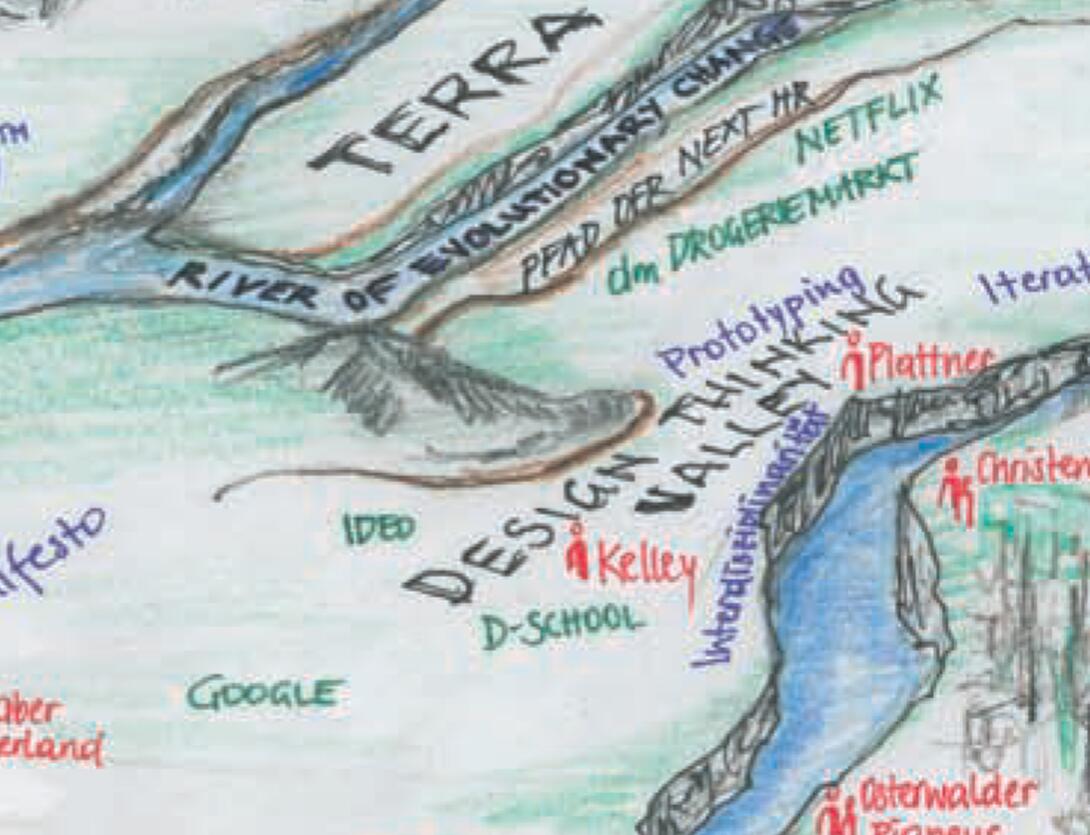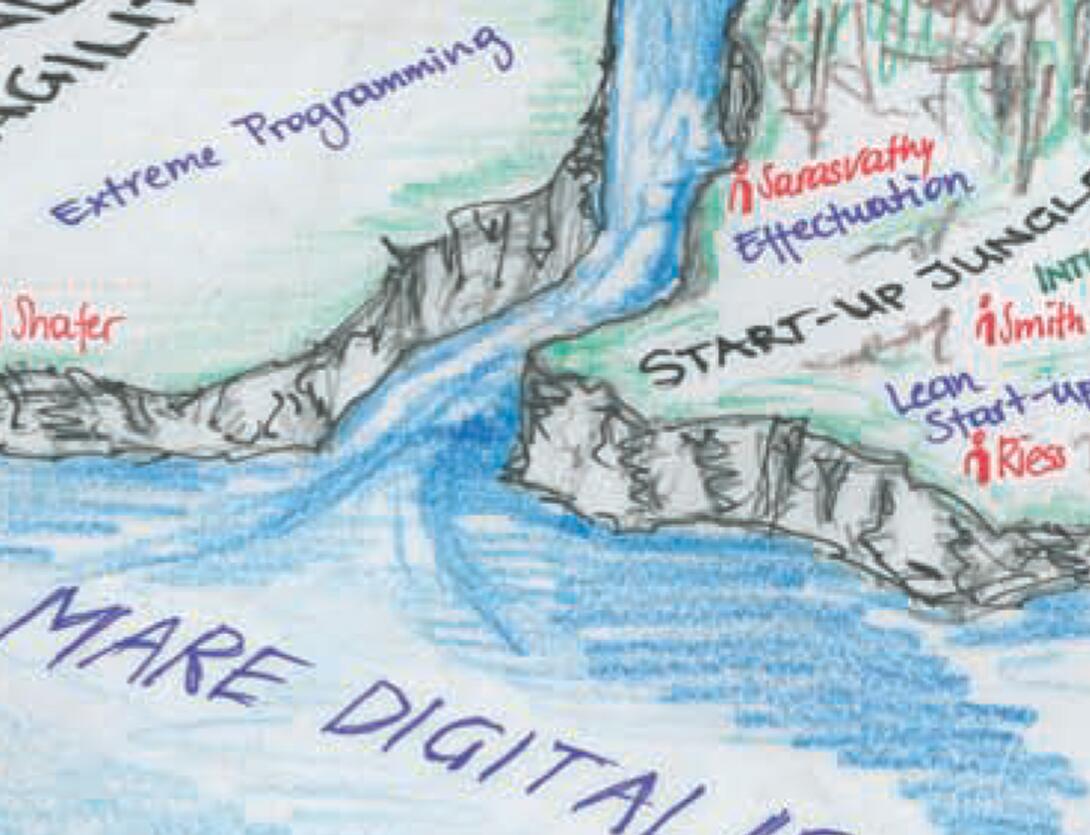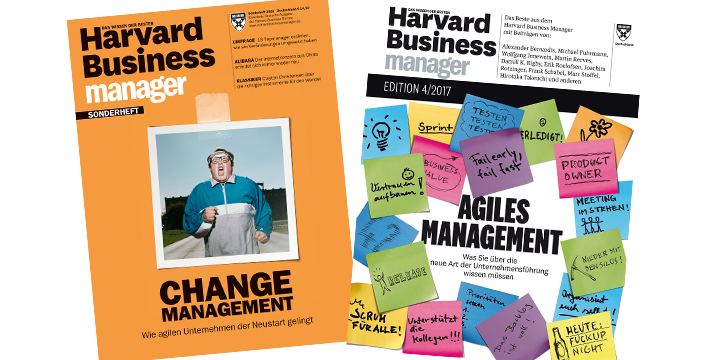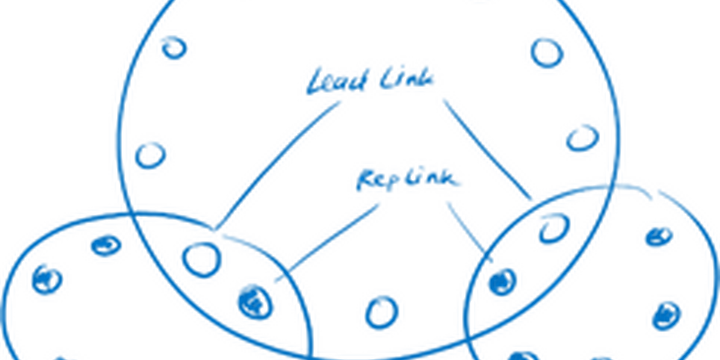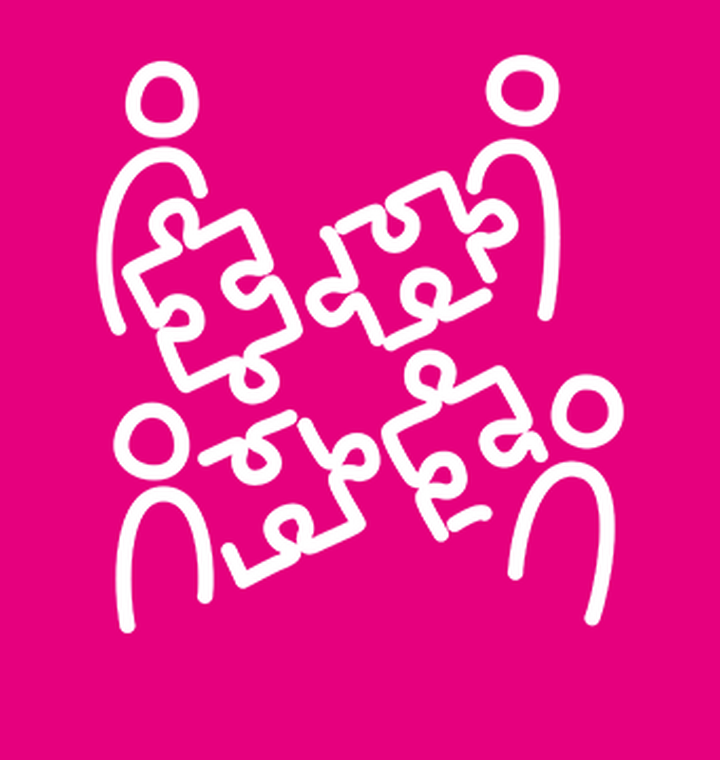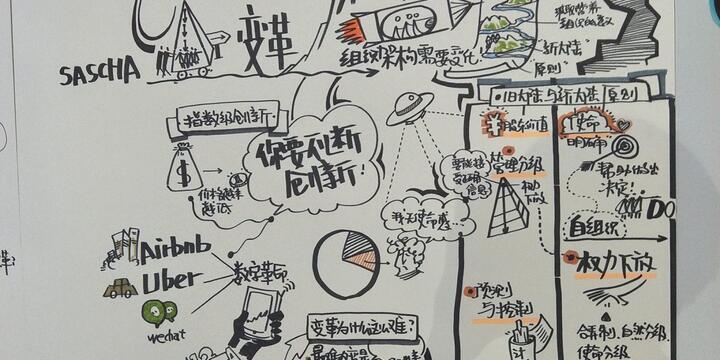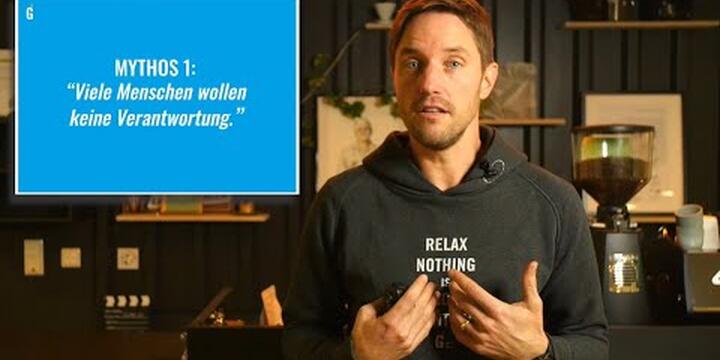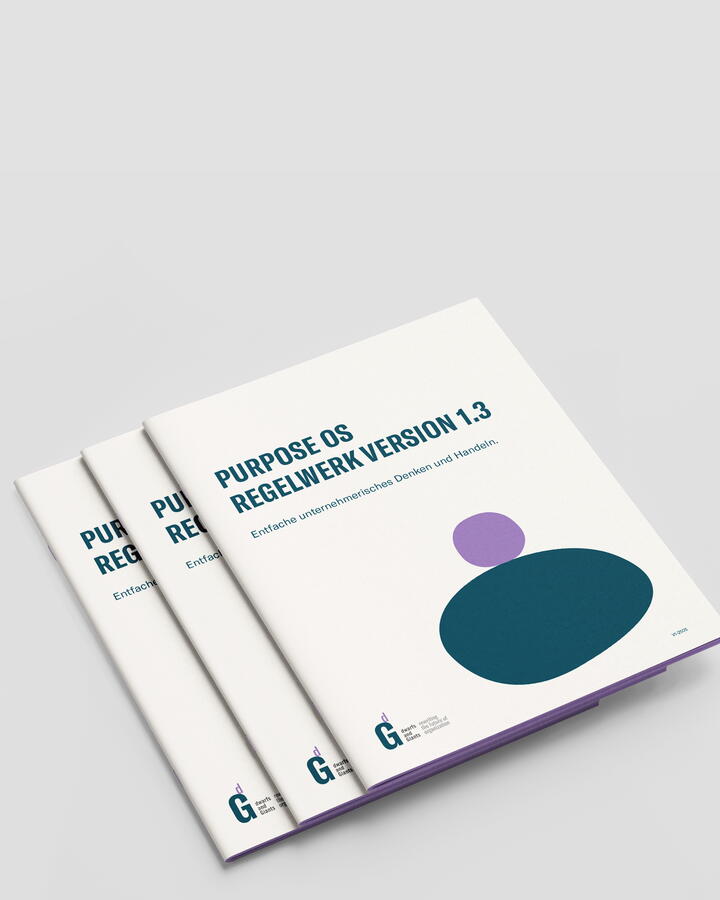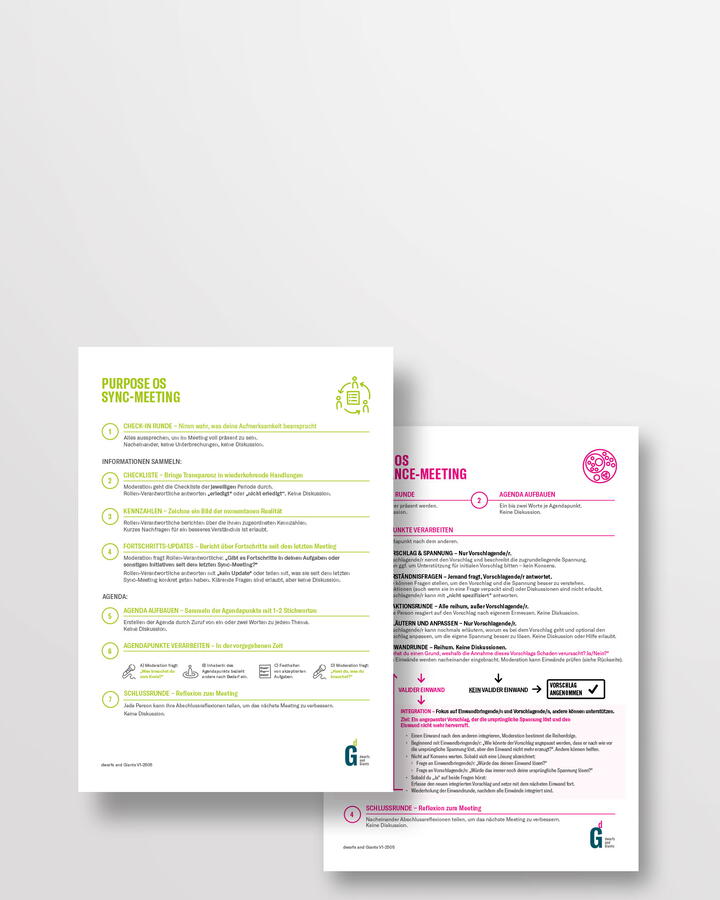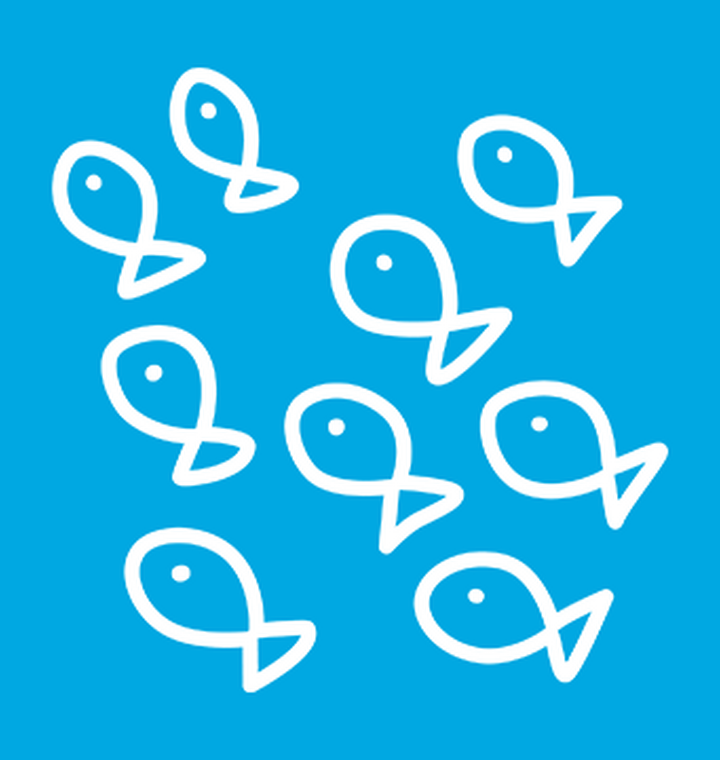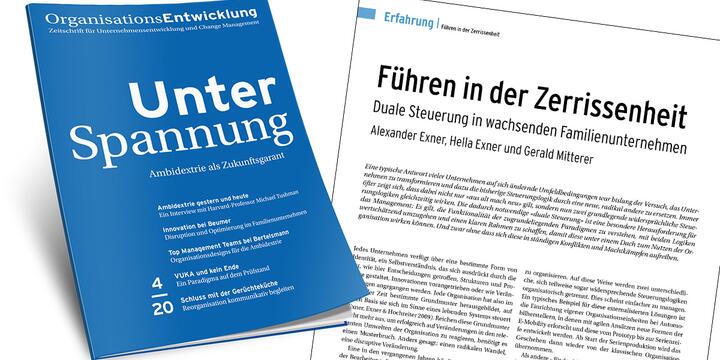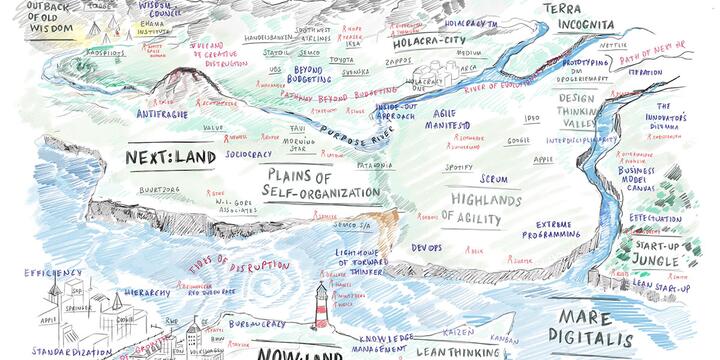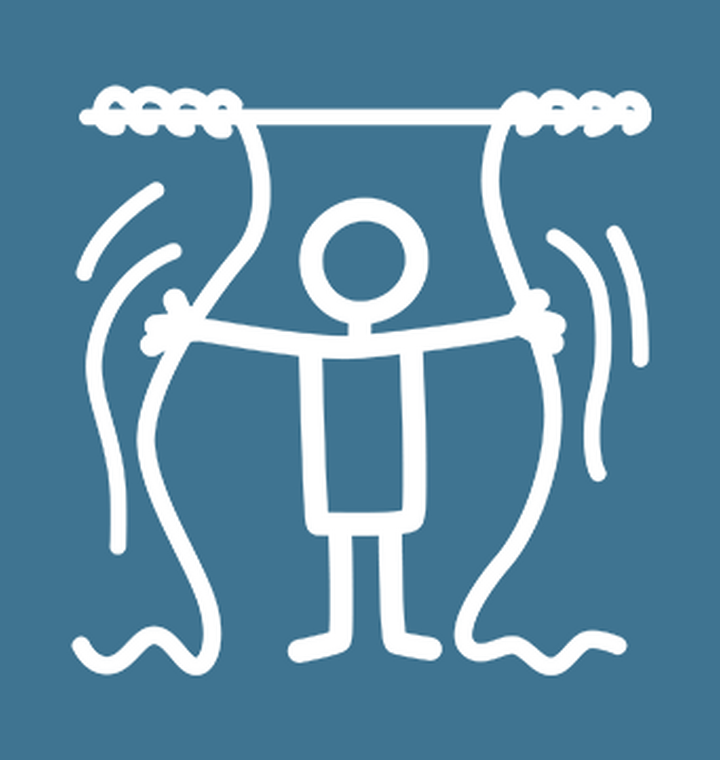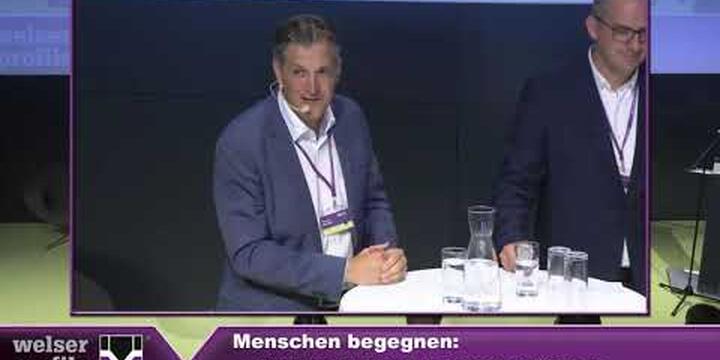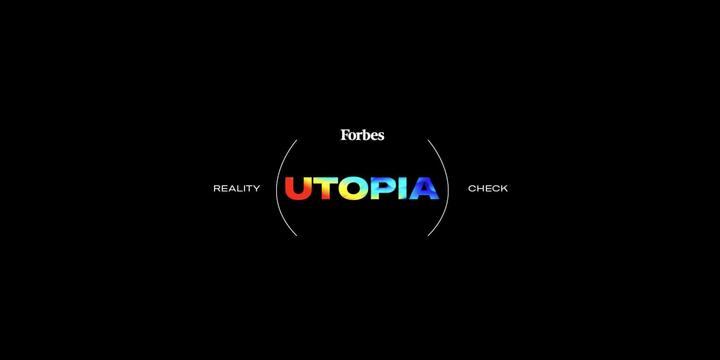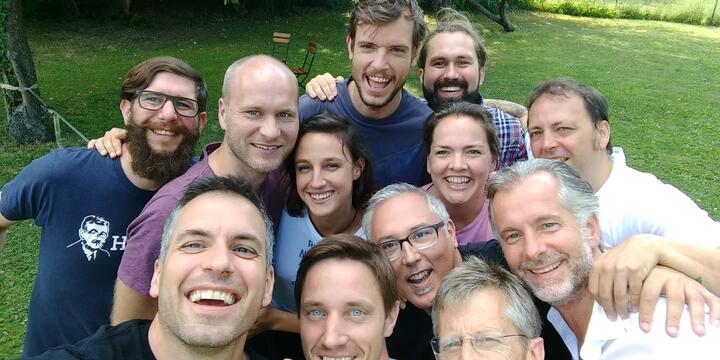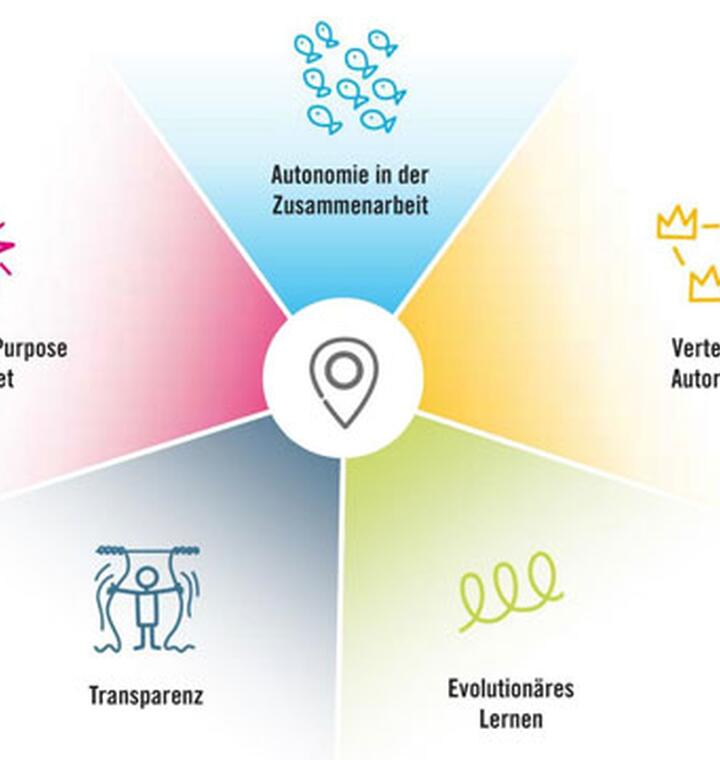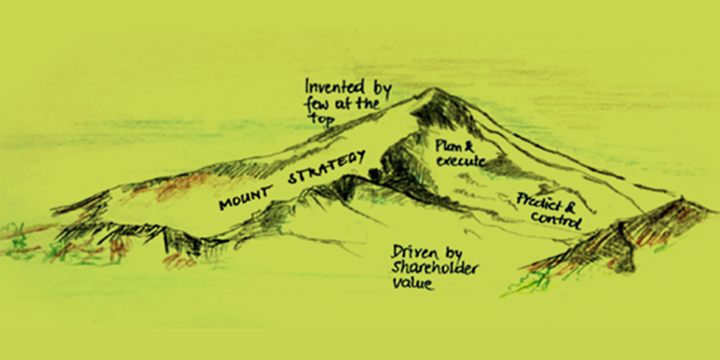The next:land of Organizing
A powerful global conversation has begun.
Through the Internet, people are discovering and inventing new ways to share relevant knowledge at blinding speed. Social media are creating a new transparency. This broadens leaders’ communication platforms, shortens the feedback loops and creates profound opportunities for leading by example. Worldwide, many societal movements are emerging, aiming to bring forth new ways of thinking, new organizational practices and next generation leadership.
This is a diverse movement representing thought leaders and changemakers from various industries, corporations, academia, social profits and non-governmental entities. Dozens of these multi-stakeholder initiatives have manifested — to name just a few with broader outcomes: cluetrain-manifesto, agile-manifesto, responsive.org manifesto, lean startup mindset. Even the World Economic Forum has set up a Global Agenda Council on New Models of Leadership (2012–2014). This council was convened to create an in-depth dialogue about the extent and likely impact of these changes.
From now:land to next:land
Nevertheless, most organizations still rely on a way of working designed for the industrial age. Their operating models have barely changed since they were invented over 100 years ago. That’s what we call the NOW:LAND of Organizing. You can find it on the lower part of the map as the northern parts of a huge continent. The “Cradle“ of our current way of organizing. This stretch of land was formed from the powerful, old paradigms of efficiency, standardization, predict and control, which lead to tremendous progress and growth over the course of the past one hundred years.
Meanwhile, a growing number of companies are using a completely different operating model. These companies are designed to thrive in the face of uncertainty. Rather than trying to carefully plan and predict their way to success, these companies sense and adapt to the constantly changing world around them. They have an intense bias to action and a tolerance for risk, expressed through frequent experimentation and relentless product iteration. They embrace the unknown. We call these companies the first generation of truly responsive organizations.
Who are these companies? What are they really doing regarding organizing, decision making, leading? Which practices really work?
What is next:organizing about?
From being purpose-driven, agile and responsive towards creating cultures of innovation.
next:organizing means embracing complexity, not just accepting it. In complex environments, people need to understand organizations as complex evolving systems in interdependent relations and in dynamic interplay with their environment.
If the environment is changing radically — becoming turbulent by the stream and convergence of issues that are unprecedented in both scope and variety — we must rethink and reinvent organizations, while emphasizing responsiveness and speed in decision making and leading. If there is no right or wrong answer, all that matters is the speed of learning.
Having a great and thriving company culture is then no longer just an option. Zappos, Google, Apple, Swisscom, REI, Patagonia, to name just a few, create a new frequency of dynamic interaction, agile decision making and holding space for creativity and innovation. Culture is the implicit ‘way we do things around here’. It shapes how we collectively think, relate, organize and learn.
James Butterfield (CEO of Slack), sees his job “less about making stuff and more about communicating values”. The only way to prevent the organizational drift he fears as Slack scales up is to “continually remind people” what it stands for. He wants to create a company culture for “grown-ups with children, with lives beyond work”, he is 42 himself and has children.
next:organizing - How to co-create and tune into a new frequency of your organization?
Responsive Organizations are built to learn and respond rapidly through the open flow of information, to encourage experimentation and learning on rapid cycles and to organize as a network of employees, customers, and partners motivated by shared purpose. (Responsive.org)
We explicate key building blocks on how to create a fundamental shift in the way we work and organize in the 21st Century.
Purpose first - strategy from inside-out
In the past, the goal for many organizations was just creating economic value for shareholders or owners. In other words, “making money“, and quite often with a short-term view. Today people are looking for organizations that have a purpose broader than just making money. And there is another development: In a world where landmarks in the outside are in continuous flux, organizations need orientation grounded in another realm: from within. Make your organization’s inner core, the purpose, your guiding compass for every movement in the world. Does it help to express our purpose in the world?
Purpose is at the essence of why firms exist. There is nothing mushy about it — it is pure strategy. Purpose is very idealistic, but at the same time very practical.
Hirotaka Takeuchi in FastC@mpany, Nov. 2014:
Generation Flux´s Secret Weapon
Management by rapid prototyping
In the past, organizations competed by optimizing productivity, efficiency and predictability with long-term planning. Relying on planning was important because high transaction costs made it difficult to change course once decisions had been made, resources had been committed, and people and teams had been coordinated.
Today, plans start losing value the moment they’re finished. In a complex world, forecasting and planning are no longer intended to predict, but to provoke. The only way to dynamic stability is to sense, respond and adapt to an ever-changing environment. Since we can‘t predict the future, time and resources devoted to planning are a less valuable investment than embracing agile methods and a start-up-mindset that encourages experimentation and rapid iteration. Responsive organizations still need a long-term vision, but progress is made through experimentation and learning.
next:hierarchies - clear roles, networks & self-organizing
Almost 30 years ago, early 1988, Peter Drucker, wrote in his prophetic HBR article The Coming of the New Organization: “The center of gravity in employment is moving fast from manual and clerical workers to knowledge workers who resist the command-and-control model that business took from the military 100 years ago. Economics also dictates change, especially the need for large businesses to innovate and to be entrepreneurs. But above all, information technology demands the shift. (…) Back then, however, all the knowledge, such as it was, lay with the very top people. The rest were helpers or hands, who mostly did the same work and did as they were told. In the information-based organization, the knowledge will be primarily at the bottom, in the minds of the specialists who do different work and direct themselves.”
Three decades ago, Drucker himself couldn’t imagine the future ways of organizing, but described a coming period of change: “the shift from the command-and-control organization, the organization of departments and divisions, to the information-based organization, the organization of knowledge specialists. We can perceive, though perhaps only dimly, what this organization will look like. We can identify some of its main characteristics and requirements. We can point to central problems of values, structure, and behavior. But the job of actually building the information-based organization is still ahead of us — it is the managerial challenge of the future.”
Today, technology and connectivity has increased our ability to self-organize, allowing us to collaborate more easily across internal and external organizational boundaries. And it no longer holds true that coordinating through a manager is more effective than defining clear roles and enabling people to self-organize. Working as a network allows us to organize with several different kinds of connections, and increased autonomy. And now, almost 30 years later, we can see, that many organizations all over the world have found their answers to Druckers open questions — and that there is already a more then vibrant life in the new continent we call the next:land of organizing.
Start the expedition into next:land
Where to go? What to expect? What to learn?
Highlands of Agility
East of the plain of self organization, the Highlands of Agility are rising, where a group of technology-driven innovators have settled. Out of sight of established companies, they develop new methods of software programming — and, thus, of project management. In terms of communication and organizing in conventional organizations, this has turned everything upside down.
What practices do organizations use to be agile? How have organizations implemented agile practices into their structures as well as core and decision-making processes? What effects have they observed after working with agile approaches?
Zoom in on the Highlands of Agility (1): SCRUM
With the new method of extreme programming (Kent Beck) or so-called DevOps (Andrew Clay Shafer & Patrick Debois) these organizations drove new, highly profitable ‘software mines’ into the rocky ground which fundamentally changed the landscape. These are the methodological foundations which are summarized today under the term, Scrum. This, a term that originally stems from rugby and stands for a project management toolkit which nurtures collaboration of agile, self-organizing teams by a given framework and by providing defined roles.
Maximum transparency, clarity of roles and direct feedback are the foundation of the agility of the settlers in the Highlands. It is precisely defined who the Scrum Master is and who the owner of a product is and what each of their roles in the process are. They work in (project-) sprints of one to four weeks, with direct customer feedback to the intermediate result at the end of each sprint.
In between, the teams organize themselves by daily stand-up and coordination meetings with a maximum duration of 15 minutes. One of the most renowned companies to have entirely changed their own organization and decision-making processes to the scrum logic is the Swedish music streaming provider, Spotify. Other companies such as Apple or Google have widely adopted scrum approaches and already regard it as an industrial standard.
More links, thought provoking ideas and forerunner companies from this part of next:land:
- At the core of this area in next:land you will find the Agile Manifesto for Software Development and the 12 Principles behind it.
- Harvard´s Hirotaka Takeuchi, one of the early frontrunners of next:land thinking, summarizes the purpose and practices of Embracing Agile (HBR). And shows the Secret History of Agile Innovation (HBR).
- Steve Denning reacted to this, as what he considers the, landmark in the history of management (Forbes) and explains the Why and How of Agile (Forbes).
- And if you are looking for a source of inspiration before starting with Scrum in hardware or before you change the way of developing products for being more agile, take a look at Elon Musk and especially the story of SpaceX by Helene Valadon.
Holacra-City
Above the Highlands of Agility, on the banks of the River of Purpose, lies the vibrant town, Holacra-City. The urban structure was largely designed by the software developer Brian Robertson and his founding partner, Tom Thomison. They developed an operating system for their own enterprise HolacracyOne, that changed the way power works in organizations. It distributes the decision-making authority into transparent roles across the entire organization. It organizes work around a purpose and draws a clear distinction between people (souls) and roles to eliminate ego and power dynamics, which are very common in traditional management hierarchies.
What are the experiences of organizations and their people who are working with a totally different operating system? How could this approach be integrated in large corporations? What are the experiences of shifting from a classic pyramidal approach to Holacracy? How can organizations without classic hierarchical structures work? What impact has the organizational model on the results and culture?
To fulfill the purpose of the organization, every person energizes one or more roles, aimed at leveraging the individuals’ full potential and talents. The work is structured in interdisciplinary “circles“ and within strict governance processes, roles, accountabilities and domains, which are defined to make explicitly clear what can be expected of whom and how authority is distributed. The organization is constantly adapting to new requirements. Holacracy, closes the gaps between companies at the Plain of Self Organization, the banks of the River of Purpose and the agile software developers from the Highlands of Agility.
A further core practice of Holacracy is the distinction between different types of decisions. There are governance decisions (decisions about the rules of the game) and operational decisions (operational decisions taken with role-clarity during the game). Both are made in tailored meeting formats.
Three renowned adopters have settled in Holacra-City, namely; Zappos with about 1,600 employees, known as the US model for the European company; Zalando, the Content-Platform Medium; and cash machine manufacturer, ARCA. All of them transformed their organizations completely to incorporate Holacracy: As the market determines the conditions for innovation and speed, these organizations replace endless meetings through agile, fast and smart decision-making and support a maximum possible amount of self-organization.
More links, thought provoking ideas and forerunner companies from this part of next:land:
- Two of HolacraCity´s leading thinkers, Ethan Bernstein (Harvard Business School) and John Bunch (Holacracy implementation lead at Zappos), discuss the online retailer Zappos transition to a flat, self-managed organization: The Zappos Holacracy® Experiment (HBR). They are also the co-authors of the HBR article, Beyond the Holacracy® Hype. And it´s really worth taking the time to watch their video discussing the Holacracy® implementation at Zappos (HBR).
- If you want to get a deeper understanding of why it is called Holacra-City, learn more about the inspiring ideas from Edward Glaeser: Triumph of the City — How Our Greatest Invention Makes Us Richer, Smarter, Greener, Healthier, and Happier (Amazon): Whenever a city doubles in size, the productivity per resident increases by fifteen percent. Both the city as a whole and each individual living there become more effective. For organizations, the opposite is true. Individual productivity tends to decrease as companies grow in size.”
- Here is some information on Holacracy™ directly from the source: the Holacracy™ explanation video from HolacracyOne.
- In one of our dwarfs and Giants next:videos, Brian Robertson (HolacracyOne) and Gerald Mitterer (dwarfs and Giants) discuss the similarity of self organization in cities and organizations. Studies reveal that self-organized cities outperform organizations built on a central predict and control principle with regards to productivity. Watch it below!
Design Thinking Valley
Behind the Highlands of Agility, the Design Thinking Valley opens up. Within this region, a method following the working principles of architects, urban planners and designers was created and improved. Their process of observing, understanding, ideation, prototyping and testing was transferred to the organizational context. Instead of approaching problems in a linear way, they meet the problem head on and search for a possible solution through iterative loops.
How to create and nurture Cultures of Innovation? What approaches are helpful to become more innovative? How does design thinking contribute to cultures of innovation and a new way of working? How can we integrate the needs of our customers to our processes?
For this reason, many different disciplines and professions are integrated into the process and radical prototyping becomes an essential part of the day-to-day business. In this part of next:land people like David Kelly, CEO of the design and innovation consulting company Ideo and SAP co-founder Hasso Plattner, who is supporting universities like the D-School, are settled.
Within this valley, you can learn how to avoid endless planning and development processes as well as how to create new products, processes, strategies and business models with increased speed and interaction with customers.
More links, thought provoking ideas and forerunner companies from this part of next:land:
- Tim Brown (IDEO) urges designers in his TED Talk to think big.
- Tom Wujec presents some surprisingly deep research into the “marshmallow problem”, a simple team-building exercise that involves dry spaghetti, one yard of tape and a marshmallow: Build a tower, build a team.
Start-Up Jungle
Far to the east of next:land, separated by a wide inlet, lies the wild start-up jungle, in which countless start-ups compete for light and food. Some of them prosper, while others disappear as fast as they appeared. Whoever enters this jungle quickly learns what it means to react and to adapt to the fast-changing surroundings to bring new ideas into the world at tremendous speed.
How do start-ups deal and work with uncertainty? How to set up a start-up mindset within a large company? How can we create agile strategies?
No wonder that all kinds of organizations from small start-up teams to large companies rush to this vibrant area as a result. The most noted inhabitant of the jungle is the Silicon Valley Entrepreneur Eric Riess, with his 2011 book “Lean Startup”. The best way to summarize the approach of many companies here in a few words is probably: “build — test (measure) — learn — and then do it”.
Jungle explorers such as Clayton M. Christensen (“The Innovators Dilemma”) have shown what power these disruptive innovations that are arising under the laws of the jungle have. Saras D. Sarasvathy shows through the concept of “Effectuation” which mindsets and methods serial entrepreneurs use. Moreover, Alexander Osterwalder and Yves Pigneur designed the business model canvas methodology. Downloaded millions of times, this approach helps to bring ideas and innovations that relateto the customers’ requirements quickly and firmly into business models.
However, only about one out of ten of these adventurous companies make the move to the less forested areas of next:land. Despite this, expeditions of established companies into the jungle seem promising; for example, the finance software producer Intuit (at the time a 8,000 employee strong company with a rather classic innovation process) was so inspired by Eric Riess that the company transformed itself piece-by-piece. Intuit CEO Brad Smith is quoted as follows: “We turned Intuit into an eight-thousand-person start-up.“
More links, thought provoking ideas and forerunner companies from this part of next:land:
- The Lean Startup — a talk by Eric Ries and the Storyboard of The Lean Startup Introduction.
- Lean Startup Meets Design Thinking. Google for Entrepreneurs teamed up with Virgin Unite to host a not-to-miss conversation featuring three extraordinary leaders in business and product design. Moderated by Kaili Emmrich of Google for Entrepreneurs, the Hangout featured Eric Ries (The Lean Startup), Tim Brown, (CEO of IDEO) and Google Ventures Design Partner, Jake Knapp.
- Scott Cook from Intuit Inc. about Rapid Experimentation (Lean Startup Conference 2012)
- And Intuit´s Lean Leadership Lessons (Lean Startup Conference 2013)
Zoom in on the Highlands of Agility (2): Practices described by F. Laloux
Frederic Laloux researched 12 organizations who use fundamentally new ways to manage work and their employees. These so-called evolutionary-team organizations are self-managing, agile and adaptive. Using stories from real-life case examples (businesses and nonprofits, schools and hospitals), Frederic Laloux describes in detail how this agile and soulful way to run an organization works.
The key questions at the heart of Frederic’s book “reinventing organizations” are:
The hierarchical pyramid feels outdated, but what other structure could replace it?
Could it be that our current world view limits the way we think about organizations? Could we invent a more powerful, more soulful, more meaningful way to work together, if only we change our belief system?
If it turns out that it is possible to create organizations that draw out more of our human potential, then what do such organizations look like? How do we bring them to life?
How are these organizations structured and how do they operate on a day-to-day basis?
Let us give a very concrete example from Frederic’s research. Buurtzorg is a spectacularly successful Dutch home care organization that operates entirely in a self-managing fashion. Its 9,500 nurses work in 850 self-managing teams of 10 to 12 people. It has a clear sense of purpose, but no strategic document, no three-year or one-year plans. Just like in a living system, innovations keep happening at the fringes, and if they prove to be successful, they spread throughout the system.
Another vivid next:land example from the manufacturer FAVI: It broke down its command-and-control structures to become more agile. The story of FAVI is important to us because it breaks another stereotype. A lot of people believe that working based on lots of freedom, trust and being agile cannot work in a factory or production setting. FAVI is a manufacturer and supplier of technical parts for various industries. It is a pressure die-casting company, specialising in copper alloys that currently employs around 400 people. At FAVI, power is distributed. There are no bosses, only coaches. Anyone who senses a problem or an opportunity can initiate a decision-making process, using methods that leverage the collective intelligence of the organization.
One common misconception about self-management is that it’s just your normal organization where you take hierarchy out, where no one is a manager anymore. When you do that, of course, you just get chaos and confusion. Self-management relies on a whole set of interlocking structures and practices, just as the good old pyramidal model did.
More links, thought provoking ideas and forerunner companies from this part of next:land:
- A Talk by Frederik Laloux about soulful organizations. And another one about reinventing organizations.
- A video about the evolutionary steps of organizations (from Agile For All): Lean and Agile Adoption with the Laloux Model
- A talk by Doug Kirkpatrick about self-management: Beyond empowerment — are we ready for the self-managed organization?
- Two talks by Jos de Blok, founder of Dutch organisation Buurtzorg, where autonomous teams of nurses work directly with their patients in a community-based network, free from management structures and unnecessary administrative burdens. On organizational structures and organisation without management.
Want to know more about next:land?
We are continually exploring further regions of next:land. Regions that are already chartered on the map: Through the currents of the Tides of Disruption, or theMare Digitalis, which will sweepingly change life in now:land, just as in next:land. Through the Purpose River or the Pathway beyond Budgeting, to just mention a few. We will also report of further new regions of next:land like the Hills of Strategizing. For this, the maps must be redrawn and extended. Until then, stay tuned for news from next:land by subscribing to our next:letter!
This translation of the HBM-publication from 2016 was originally published by dwarfs and Giants on Medium on Feb. 1, 2017
